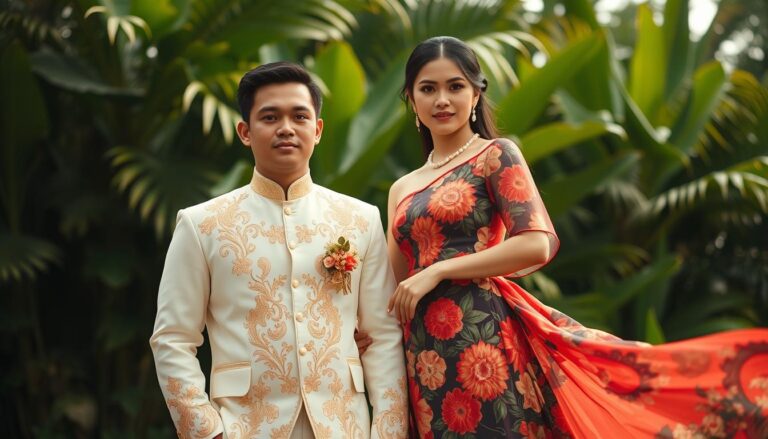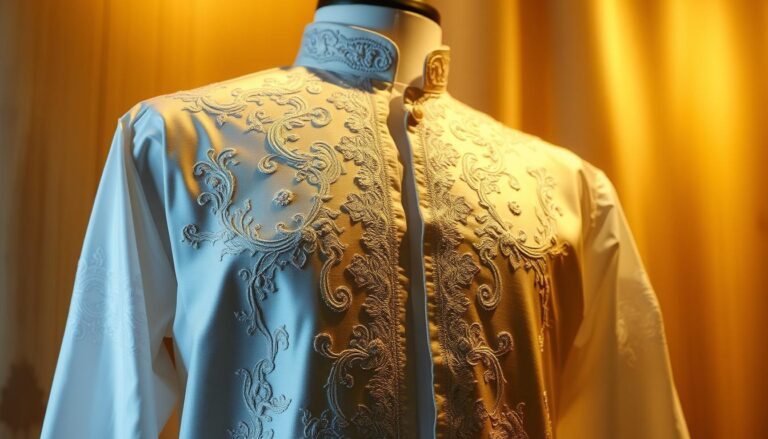Barong Tagalog Etiquette: Wearing Tips & Common Mistakes
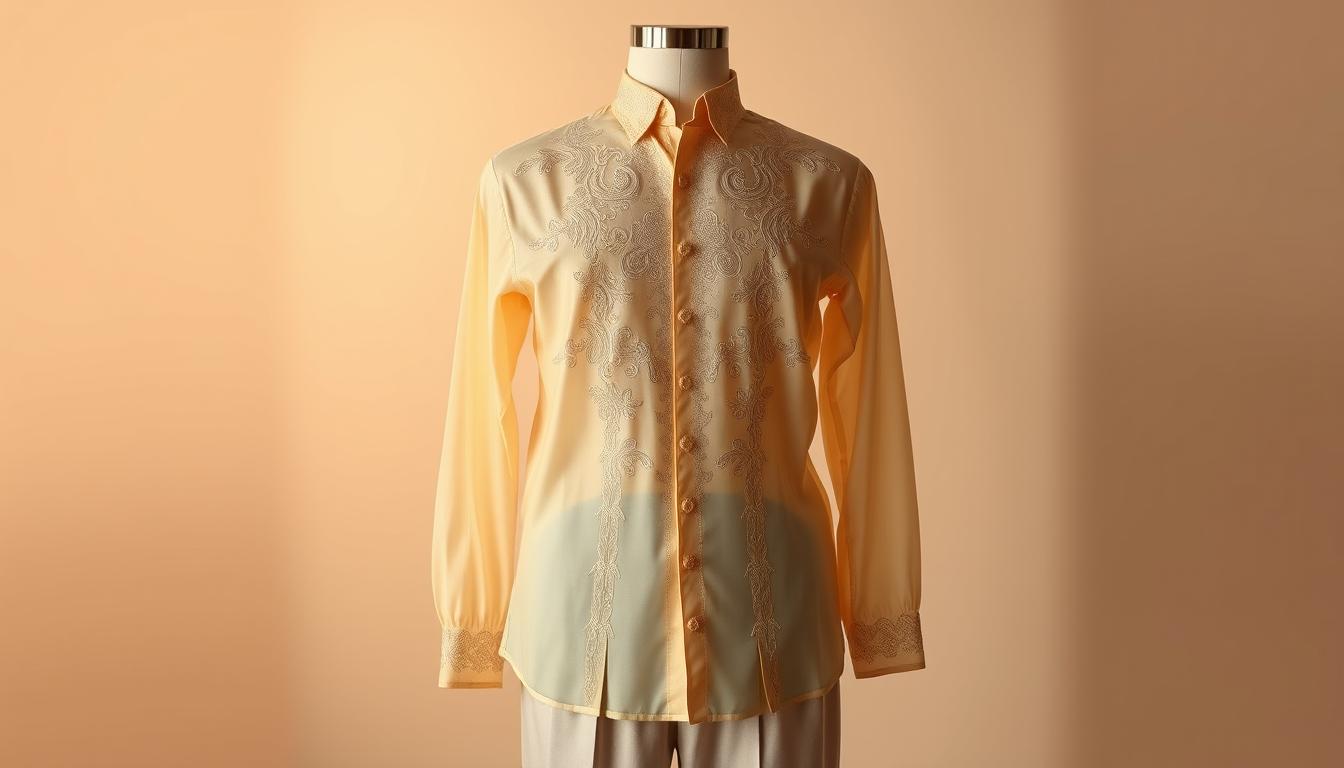
Rooted in Filipino heritage, this lightweight garment blends tradition with modern elegance. More than just clothing, it reflects cultural pride and demands thoughtful styling. A well-fitted piece enhances confidence, while poor choices can distract from its timeless appeal.
Fabric selection is critical. Natural materials like piña or jusi silk ensure breathability and drape gracefully. Synthetic blends may lack the sophistication needed for formal events. Pairing the garment with a plain white undershirt maintains a polished look without visible distractions.
This guide explores design principles that honor tradition while accommodating contemporary tastes. You’ll learn how embroidery patterns and collar styles impact formality levels. Practical tips address common errors, like mismatched footwear or ill-fitting sleeves that compromise comfort.
Modern wearers appreciate subtle updates to classic designs. Neutral tones work for weddings and business gatherings, while colored variants suit casual occasions. Proper care—like gentle ironing—preserves the fabric’s delicate texture and ensures a crisp silhouette.
Key Takeaways
- Cultural significance shapes styling rules for formal and casual events
- Natural fabrics enhance comfort and maintain traditional elegance
- Undershirt coordination prevents visible lines and preserves modesty
- Fit adjustments ensure mobility without sacrificing sophistication
- Accessory pairings should complement rather than overpower the design
Understanding the Cultural Significance of the Barong
This iconic Filipino garment traces its roots to precolonial times, evolving through centuries of cultural exchange. Originally called the “baro”, early versions featured simple designs suited for tropical climates. Spanish colonial influences later refined its silhouette, creating the sophisticated attire recognized today.
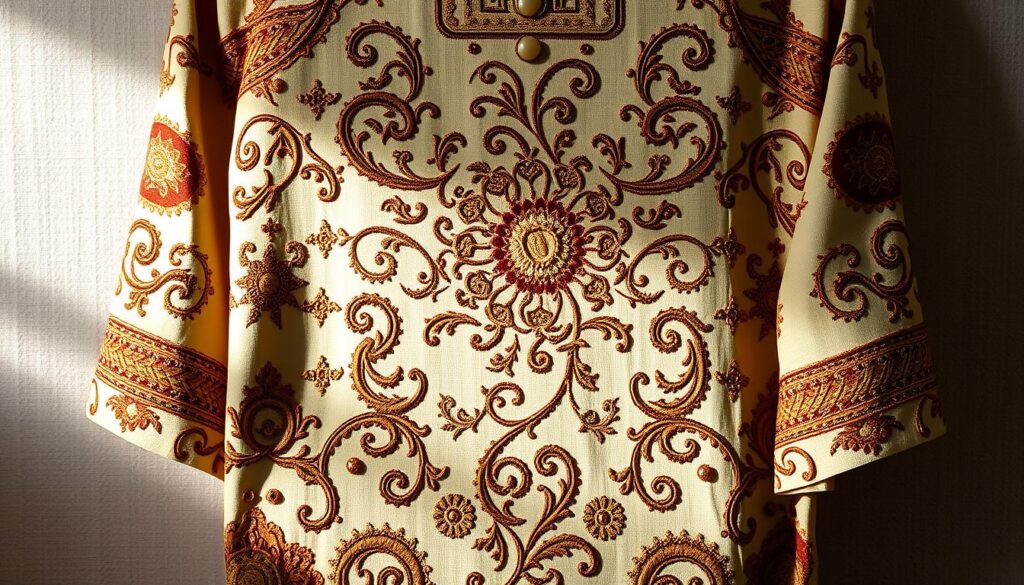
History Woven Through Thread
Traditional fabrics like piña silk showcase Filipino craftsmanship. Artisans hand-cut pineapple leaves to create this luxurious material, which became a status symbol. Three embroidery styles define authentic designs:
| Technique | Complexity | Modern Use |
|---|---|---|
| Calado (openwork) | High | Wedding barongs |
| Sombrado (shadow) | Medium | Business events |
| Machine-guided | Low | Casual occasions |
From Rituals to Runways
Modern ceremonies maintain traditional reverence for this garment while embracing innovation. Designers now experiment with colored linings and contemporary patterns, though purists argue:
“The off-white base color preserves the fabric’s natural beauty – altering it risks losing cultural DNA.”
Graduations and political summits alike feature updated versions that honor heritage through precise collar cuts and lightweight construction. Choosing between ancestral methods and modern adaptations depends on the event’s formality and personal style.
Mastering Barong Tagalog Etiquette
A flawless silhouette begins with precision. The right measurements transform this traditional garment from ordinary to extraordinary, balancing cultural respect with personal comfort.
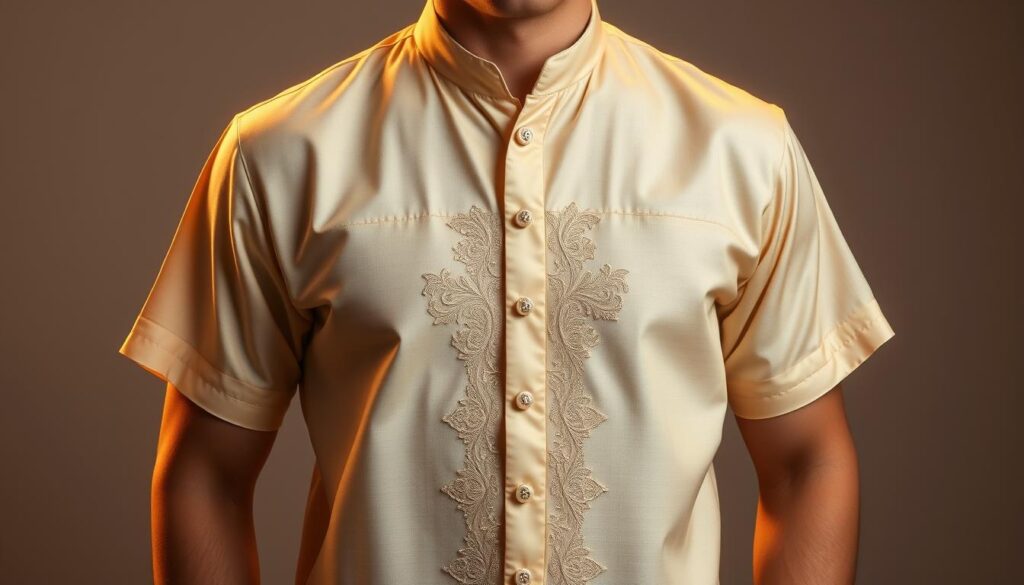
Proper Fitting Guidelines for a Flawless Look
Tailors recommend three critical measurements for the perfect fit:
| Area | Guideline | Impact |
|---|---|---|
| Collar | One finger’s space between neck and fabric | Prevents choking |
| Sleeves | End at wrist bone | Maintains clean lines |
| Length | Bottom of buttocks | Preserves drape |
Shoulder seams must align perfectly. This prevents the outfit from pulling across the back during movement. For formal events, consider side slits that allow natural stride without bunching.
Common Mistakes to Avoid When Wearing a Barong
Many men choose standard undershirts that create visible lines. A fitted camisa de chino solves this—its smooth surface won’t disrupt the design’s transparency.
Avoid these errors:
- Thick fabrics under translucent materials
- Pinning boutonnieres directly to delicate embroidery
- Mixing formal coat styles with casual footwear
Classic versions demand simpler accessories than modern interpretations. Make sure your combination matches the event’s formality. Remember: bulkier fabrics hide embroidery details, while lightweight options showcase craftsmanship.
Achieving the Perfect Fit and Coordinating the Undershirt
A flawless silhouette combines expert tailoring with smart layering. Precise measurements transform the outfit from ordinary to striking, while the right undershirt ensures transparency works in your favor.
Custom-Tailored Fit Tips and Measurements
Professional tailors measure three key areas for men’s formal wear. Collar spacing should allow one finger’s width between neck and fabric. Shoulder seams must align with your natural bone structure to prevent pulling across the back.
Long sleeves should end at the wrist bone. This maintains clean lines when shaking hands or gesturing. For weddings or business occasions, consider side slits that allow movement without disrupting the drape.
Selecting a Complementary Camisa de Chino
The Camisa de Chino serves as the foundation layer. Choose a long-sleeve version in soft gray or eggshell to avoid stark contrasts under sheer embroidery. Keep it untucked to eliminate visible lines.
For outdoor events, add a 100% cotton tee beneath for sweat control. This third layer remains invisible if cut shorter than the undershirt. Match the color to your shoes or coat for cohesive styling.
Remember: A perfect fit boosts confidence as much as comfort. Test movements like reaching or sitting before finalizing adjustments. Your body should feel supported, not restricted, in this cultural design.
Enhancing Your Look with Accessories and Coordinated Pairings
Thoughtful styling elevates this traditional attire from ceremonial garb to a cohesive statement. Every element—from footwear to wristwear—should amplify the garment’s craftsmanship without competing for attention.
Choosing the Right Pants, Shoes, and Socks
Pair straight-cut trousers in charcoal or navy with your outfit. These hues create balance with intricate embroidery while maintaining formality. Avoid pleats—slim-fit designs modernize the look without restricting movement.
Black leather oxfords anchor formal weddings, while dark brown monk straps suit semi-formal events. Match socks to your shoes for seamless transitions. Stylist Brittany Hampton notes: “A monochrome base lets the barong’s details shine as the focal point.”
Accessorizing with Cufflinks, Watches, and More
Opt for minimalist gold cufflinks or a slim dress watch. These accessories add refinement without overwhelming sheer fabrics. Avoid chunky designs—they clash with delicate patterns.
- Matte finishes complement jusi silk better than polished metals
- Lapel pins should align with the collar’s angle
- Skip neckties to honor the garment’s clean lines
Tips for Matching Colors and Patterns
Stick to a three-color combination maximum. Earth tones harmonize with traditional off-white barongs, while pastel undershirts soften bold color variants. For modern interpretations, match metallic accessories to embroidery threads.
Test your style in natural light before the event. Harsh contrasts diminish the fabric’s translucency, while coordinated tones enhance its elegance. Remember: subtlety honors tradition more than bold experimentation.
Conclusion
Every detail in your ensemble speaks volumes about your respect for tradition and personal style. A proper fit and lightweight fabrics like piña ensure both comfort and cultural authenticity. Pair neutral trousers with polished shoes to let embroidery patterns shine without distraction.
Coordinate your outfit by matching socks to footwear and selecting subtle accessories. For weddings or formal ceremonies, crisp collars and breathable undershirts maintain modesty while preventing visible lines. Modern designs work for casual occasions when styled with earthy tones.
Share your perfected look on Facebook or tweet photos using #CulturalElegance. Remember: well-maintained garments with precise tailoring honor Filipino craftsmanship. Whether attending graduations or business events, these choices blend heritage with confidence.
Make sure each element—from fabric texture to footwear—creates harmony. This attention to detail transforms cultural pride into timeless sophistication for every modern gentleman.

